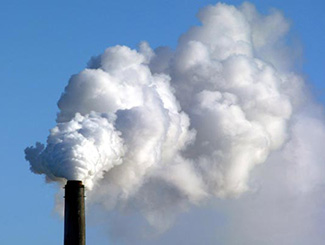 by Andrea Contri27
Marzo
2014
by Andrea Contri27
Marzo
2014
Emission trading, obligations and opportunities
The new emissions trading system requires a wide range of adjustments as well as possible financial benefits
ETS: an acronym with which companies will have to deal daily in order to respect targets and parameters if they want to avoid fines or their production being slowed down.
The latest news on the EU Emission Trading System (ETS), the European directive on the reduction in greenhouse gas emissions, were discussed December 17th at a meeting organized by Confindustria Ceramica and Laterizi: “EUA’s management: dynamics and market opportunities”. The meeting aimed to provide companies with technical information to help them manage and optimize their EUA’s through auctions, secondary market, and financial management of quotas. A difficult task if you consider that CO2 quotation market has always been unstable.
On the 1st of January 2013 EU ETS entered phase 3 and became effective also for ceramic manufacturers. By April 30th companies will have to provide as many EUA certifications as the tonnes of CO2 emissions they produced in 2013.
Since both sectors currently risk carbon leakage (in 2015 the list of sectors at risk of delocalization will be reviewed), managers get 100% of their EUA’s for free as compensation for their own emissions.
The ETS scheme is based on allowances given according to the fall back approach and product benchmarking, calculated on the average performance of the first tenth percentile of specific emissions of the most efficient plants in the EU for the years 2007-2008. It stipulates that in case emissions are higher than the free assigned allowances, companies can buy emissions allowances on the market.
All companies concerned with the EU ETS directive, in particular those which have followed it since 2007 have great reasons to access the carbon credits market (EUA, CER, ERU) such as covering operations and the possibility to manage and value their own portfolio through products offered by sector traders.
Regardless of the company’s compliance with the directive, the free given EUA’s can be managed as assets and in certain cases (subject to market risks) even produce income, such as economic benefits or more EUA CER’s at hand (which can be rented out). It is therefore a sort of self financing scheme boasting lower tax rates than those on the market (contract of repurchase - REPO).
Managers of the ceramic tiles and construction sector can take part in all other member states emissions auctions, both in the transitional common auction platform (directed by EEX) and in the German (EEX DE) and the UK (ICE UK) platforms. As an alternative EUA’s can be bought on the secondary market whose main exchange platforms are still EEX and ICE, and where emissions allowances can be bought as spot contracts or in several derivatives of the financial markets. Another possibility on the market is the access to international credits (CER and ERU) that help comply with the directive at a lower cost. The EU ETS directive allows compensation for part of the gas emissions through international credits originated by the Kyoto protocol, a very convenient option considering they cost around 0,56 € compared to EUA’s 5,38 €.
The EU regulation 1132/213 sets the use of these credits in phase III of EU ETS: for new operators who did not receive free allowances in 2008-2012 (the whole of the ceramic tile sector and 90% of construction sector) that amounts to 4.5% of 2013-2020 emissions; while for some production plants of construction material (10% of the total), which were already following the ETS, that amounts to 11% of 2008-2020 EUA’s (a higher value if compared to 7.5% allowed in 2008-2012).
On the basis of January 29th 2014 quotation, a 25,000 EUA allocation has a market value of 134,500 €, which is the self financing amount a company can have access to with an annual tax rate ranging between 3% and 5%, through the setting up of a ”repo” leading to a spot contract and the consequent term purchase.
On the other hand a “renting out” scheme generates an annual income higher than 4% (about 5,500 € | 1,000 EUA or 9,800 CER).
The meeting ended with B2B meetings between market operators and sector companies. It was the first national initiative where demand and offer of operators and companies at a European level have been able to meet.
ETS deadlines
| Date | Things to do |
| February 28th (every year) |
ETS committee issues free allowances for the year on the factory’s emission allowance statement. |
| March 31st (every year) |
Deadline for communicating the previous year’s emissions. Such emissions, based of methods found in Monitoring Plans, must be certified by an accredited office. |
| April 30th (every year) |
Deadline for companies to surrender allowances (so as to cover its tCO2 emissions) on the emission allowance statement. |